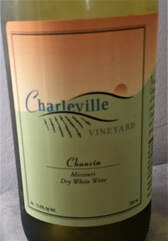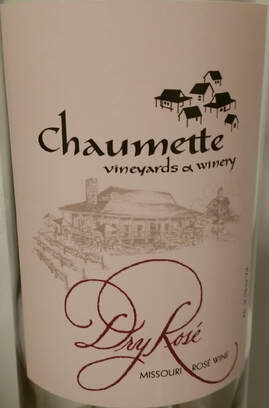
Charleville Vineyard's Chardonel is a white wine with lime and crisp greenery on the nose. The wine has solid acidity and hints of green apple too. It is refreshing to drink on a hot day but it is also a nice wine to pair with food, even fairly rich food. Charleville Vineyards is in Ste. Genevieve, Missouri, a town with a number of wineries nearby, lots of history and tons of bed and breakfast-type lodging. This wine is not some curiosity from a tourist area though, but a quality every day drinker.
The grape is the child of Chardonnay and Seyval Blanc. It was created in 1953. Like the former parent wine made from Chardonel is sometimes oaked. This particular version is not.
Be sure to not think "Chardonnay" when you try this wine because it is not that. It is its own thing and has its own flavor profile. Even so it will please Chardonnay lovers and this version will get some Sauvginon Blanc drinkers on board as well--especially lovers of French versions.
Among the hybrid grapes Chardonel has perhaps the best reputation. Even the skeptics say that high quality wines can be made with the grape. I also tried a version (from nearby Chaumette Vineyards) that was oaked and the wine handles oak well. That wine was bigger, with more vanilla and a hint of butterscotch. Hybrid grapes are crossings between European vitus vinifera grapes and any of a number of American grapes (or in this case? other hybrids).
Why were hybrid grapes created? Initially it was because Phylloxera was wiping out wine producing grapes around the world. Later it was to create grapes that were more cold hardy or that would grow in other areas wine grapes found inhospitable. In many cases these grapes have a dubious reputation but not always. We've dealt with reasons for grapes having dubious reputations before--it is often because few winemakers have really TRIED to make quality wine with them.
Distribution of these wines is iffy because our country has idiotic laws about wine distribution (usually written by big distributors with loads of campaign dollars to hand out). You may have to get into the area (or at least Missouri) to find these wines but it would be a lovely weekend trip.


 RSS Feed
RSS Feed